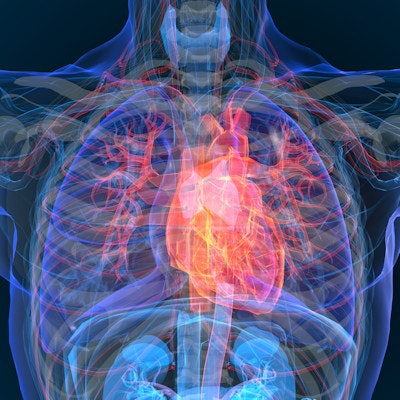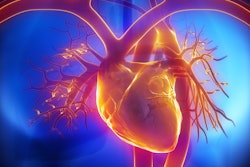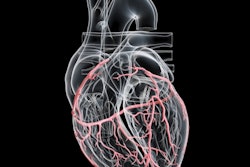
Coronary artery calcium (CAC) score data on CT imaging are more effective at predicting a middle-aged person's risk of developing heart disease than genetic factors, according to a study published May 23 in JAMA.
The findings could improve patient outcomes, lead author Dr. Sadiya Khan of Northwestern University in Chicago said in a statement released by the university.
"Finding the best way to identify who is at risk for developing heart disease can help determine what needs to be done to lower their risk," Khan said. "[These study results] can help doctors and patients in managing risk for heart disease, which is the leading cause of death in the U.S."
Typically, heart disease risk is assessed by factors such as high blood pressure and cholesterol levels, but this approach isn't perfect. Many individuals experience heart problems without exhibiting any of the risk factors. Clinicians also refer to patients' genetic makeup, since heart disease risk can be inherited, the group noted.
"Novel risk markers may improve risk estimation for cardiovascular disease, particularly for coronary heart disease," the researchers wrote. "Imaging of subclinical atherosclerosis with CT to detect coronary artery calcium has been demonstrated to be a potent predictor of future clinical coronary heart disease."
Khan and colleagues compared risk scores based on genetic data to CAC score CT findings to determine how best to evaluate a patient's vulnerability to heart disease via research that included data collected from 3,208 white adults (with a median age of 61) taken from two studies: one conducted in the U.S. and another in Rotterdam, the Netherlands.
The team considered risk factors for heart disease, genetics, and CAC score data from CT scans to estimate participants' risk of developing heart disease. Low risk was defined as an individual having less than a 7.5% risk of developing heart disease in the coming decade. If an individual's risk was above 7.5%, they were advised to begin taking statins. Patient follow-up lasted up to 17 years.
What did the team find? Genetic data did not change a person's risk category based on blood pressure and cholesterol risk factors. But CT imaging data moved half the study participants into the high-risk group, according to the university.
"These findings support recommendations to consider CT screening to calculate risk for heart disease in middle-aged patients when their degree of risk is uncertain or in the intermediate range," Khan said.





















